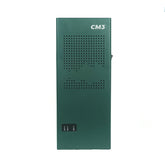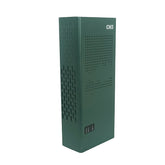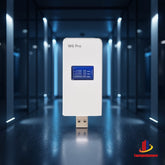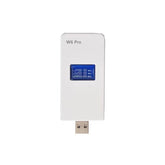Signal Attenuation and Interference
The signal strength of a radio signal gradually decays during transmission. The receiver can only receive wireless signals that identify the signal strength above a certain threshold, so if the signal is attenuated too much, the receiver will not be able to identify the wireless signal. Below are some of the main common factors that affect signal attenuation.
1. Obstacles
Obstacles are most common in wireless network environments and have a significant impact on signal attenuation. Different walls, glass and doors in our everyday environment have varying degrees of signal attenuation. In particular, metal obstacles can completely block and reflect the propagation of wireless signals. Therefore, during the network planning process, try to avoid any obstacles that block the AP.
2. Transmission distance
When electromagnetic waves propagate in the air, the signal strength will gradually attenuate and disappear as the transmission distance increases. Path loss is the attenuation of the transmission path. Although it is impossible to change the attenuation value of the air or transmit radio signals while avoiding the air, it is possible to extend the transmission distance of electromagnetic waves by appropriately increasing the transmit power at the antenna end and reducing obstacles. The farther electromagnetic waves travel, the more space a wireless signal can cover.

3. Frequency
In the case of electromagnetic waves, the shorter the wavelength, the more severe the attenuation. Radio signals use 2.4GHz or 5GHz electromagnetic waves to transmit signals. The electromagnetic waves used have high frequencies and short wavelengths, so the attenuation is obvious. Usually, the transmission distance will not be that far.
In addition to the above factors, antenna, data transmission speed, modulation scheme, etc. can also affect signal attenuation.
signal interference
In addition to the signal attenuation that affects the perception of the phone jammer's radio signal, jamming and noise also play a role. The signal-to-noise ratio, or signal-to-interference-to-noise ratio, is often used to measure the effect of interference and noise on wireless signals. Signal-to-noise ratio and signal-to-noise ratio are key technical indicators to measure the reliability of communication quality in communication systems. The bigger the ratio, the better.
Interference refers to the interference caused by the system itself and various systems, such as frequency interference, multipath interference, etc.
Noise is an irregular extra signal that is not present in the original signal produced after passing through the device. This signal is context dependent and does not change with the original signal.













